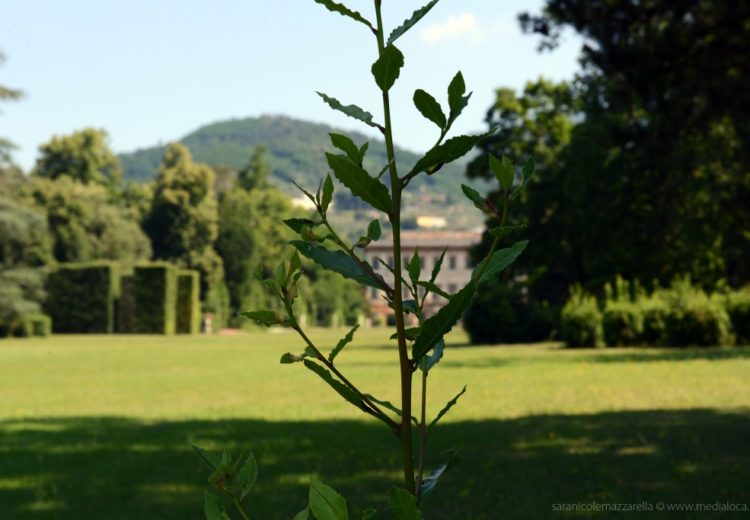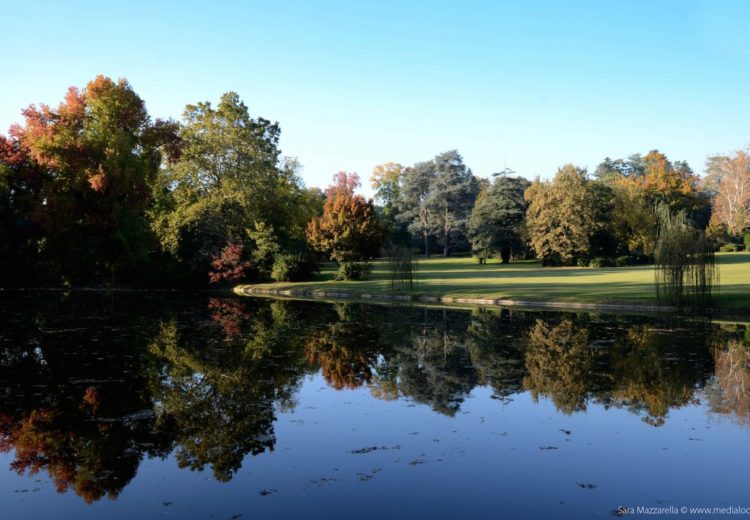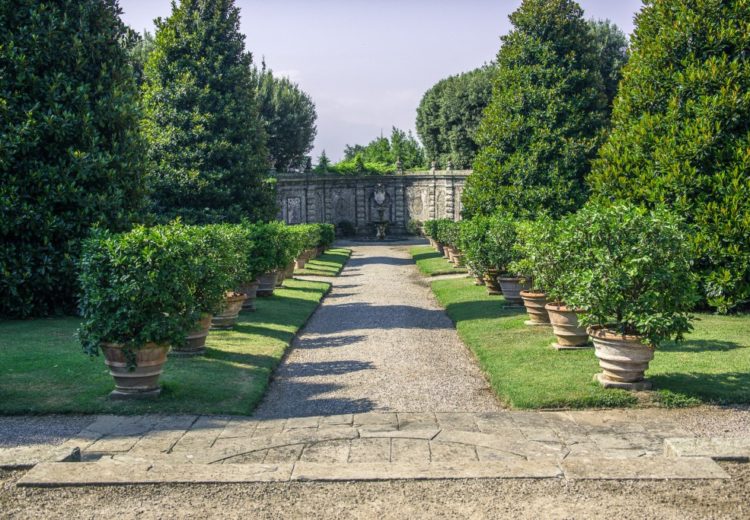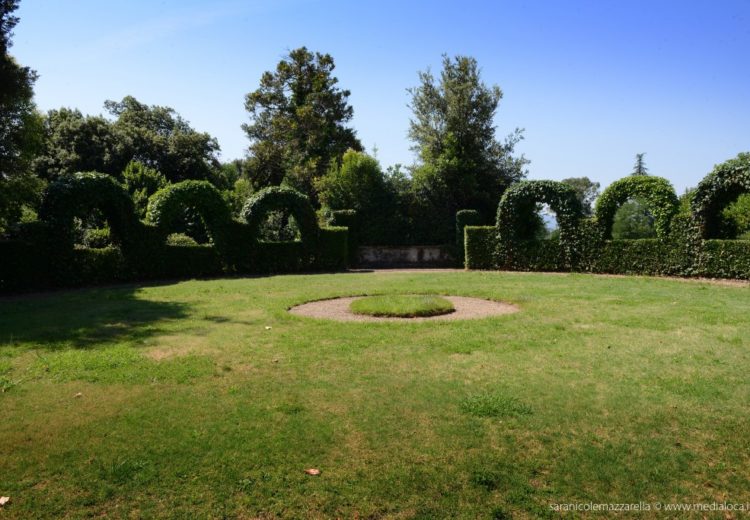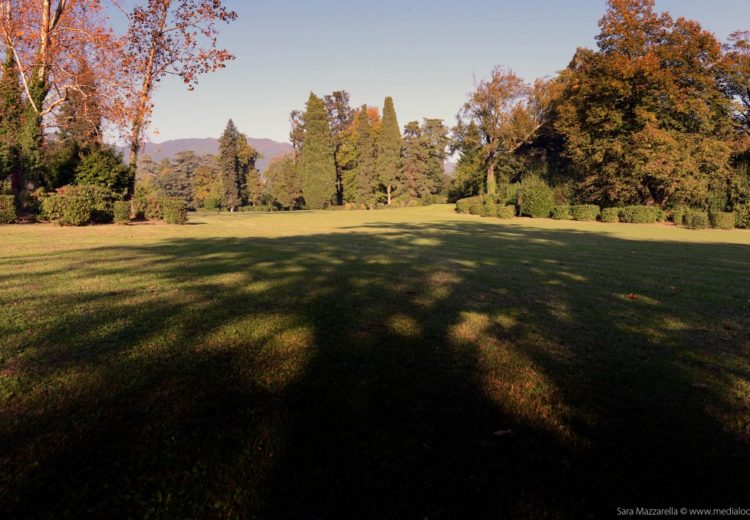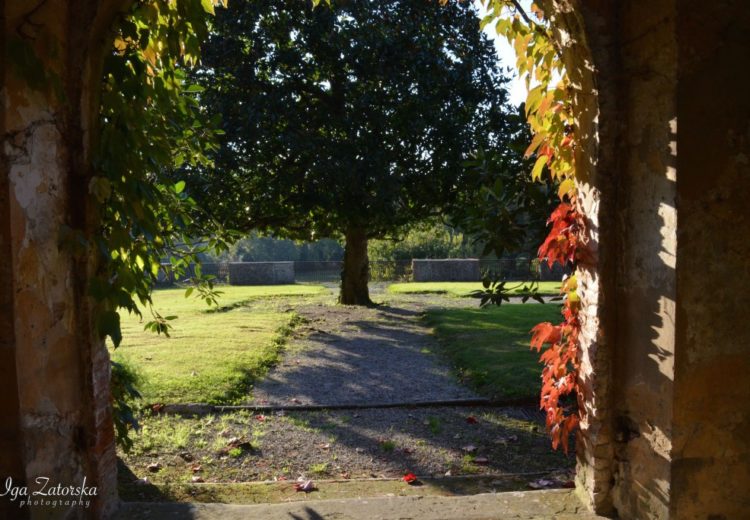The Gardens of Villa Reale are host to numerous trees, which have borne witness to thousands of visitors over the years, including royalty and illustrious figures such as Salvador Dalì, Gianni Agnelli and Alberto Moravia. The list below will help you to identify the most important trees within the gardens during your visit. Sadly, some of the oldest trees were blown down during the storm on the 5th of March 2015, including a splendid Cedrus libani (cedar of Lebanon) and a more-than-300 year old Cupressus macrocarpa (Monterey cypress). Despite this tragedy, the huge variety and size of the trees, together with the architecture found within the gardens create an impressive spectacle. Take a walk around the paths, following the two scenic routes, and discover unique places of natural beauty, enchanting for both old and young.
- Ginkgo biloba L.
The Ginkgo biloba is of Chinese origin and is considered sacred, cultivated and protected in Buddhist temples. Four splendid Ginkgo trees, two male and two female, can be found at the rear of the Villa del Vescovo. They are also known as maidenhair trees.
- Magnolia grandiflora L.
The Magnolia grandiflora (southern magnolia or bull bay), originating from the south-east of the USA, is considered to be one of the most ancient species, dating from approximately 100 million years ago. The Magnolia grandiflora rises majestically from the terrace of Villa del Vescovo, in front of Villa Reale, and there are also four of these trees in the Lemon garden.
- Lagerstroemia indica L.
The Lagerstroemia indica (crepe myrtle) originates from China and Korea, and is known as the ‘tree of San Bartolomeo’ after the martyred saint of the same name. In the gardens of Villa Reale it can be found close to the group of Ginkgo biloba in front of the lakeside garden, at the foot of Villa del Vescovo.
- Liriodendron tulipifera L.
Also known as the ‘tulip tree’, the Liriodendron is an American plant, belonging to the Magnoliaceae family. In the gardens of Villa Reale it can be found in front of the Villa del Vescovo and in the lake area.
- Quercus ilex L.
The Quercus ilex, commonly known as the holm oak, is a tree species belonging to the Fagaceae (beech) family. It is generally an evergreen, and originates from Europe. It can be found throughout the gardens, with one of the largest examples in front of the Pecci Blunt chapel.
- Cedrus atlantica (Endl.) Carr.
The Cedrus atlantica is a North African tree (from Morocco and Algeria), also known as the blue atlas cedar. Its wood, durable and fragrant, is used for constructing furniture and sculptures. It can be found in the area close to the lake, behind the gazebo.
- Quercus petraea (Mattuschka) Liebl
Of European origin, its name (petraea) derives from the fact that it favours well-drained, rocky soil. It is also referred to as the sessile oak or durmast oak. It is located at the entrance of the Villa del Vescovo’s Italian garden, next to the Ginkgo biloba.
- Juglans nigra L.
From the Eastern United States, the name of this tree derives from the Latin Iupiter (Jupiter) whilst glans refers to ‘acorn’. It is commonly known as the black walnut or eastern black walnut. The nuts are edible, but not particularly tasty. It’s possible to extract oil from the seeds, which is also edible but normally used in the manufacture of paints and soaps. It can be found in the lake area.
- Cupressus sempervirens L.
Originating from the eastern Mediterranean (commonly called the Mediterranean cypress), the wood from the Cupressus sempervirens is used for making chests and wardrobes, as its aromatic scent keeps away moths and woodworms. You can find it in the south area of the gardens of Villa Reale, near the Villa del Vescovo.
- Tilia x europaea L.
This tree (also known as the common lime or common linden) is from the Tiliaceae family, and originates from the northern hemisphere. Its wood is used for creating musical instrument parts. It can be found in the lake area.
Photos not signed L. Bartoli
